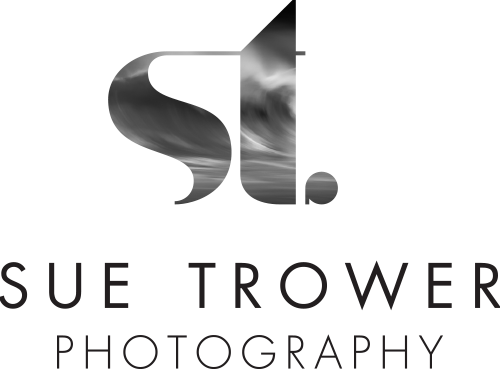Choices of camera position were limited, but I found a cluster of rocks that lined up well with the cloud and two larger tufa formations in the distance, and decided to use those rocks as my foreground. But if I lowered the camera the rocks would have blocked some of the reflection of the cloud. Instead, I raised the tripod as high as possible in order to include as much of the cloud-reflection as I could between the foreground rocks and the distant tufa towers.
In the second photograph (below), I put the camera about a foot below my eye level. Lowering the camera just that much made the foreground rocks more prominent, but I still needed to keep the camera high enough to show the triangular shape of the foreground formation, and to look over that foreground to see the reflection of the sun and its surrounding clouds. Again, I needed the foreground rocks and the reflection of the sun to be separate visual elements, and a lower camera position would have caused them to bleed into each other. Also, I really liked the way that triangular foreground echoed the V-shaped clouds – an effect that would have been lost if the camera were lower.

